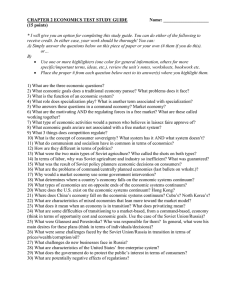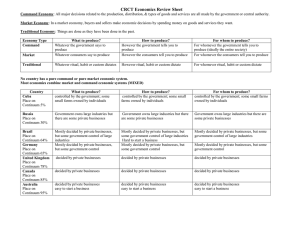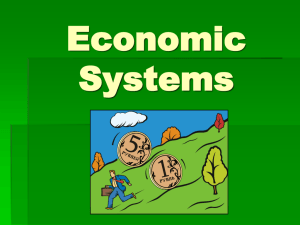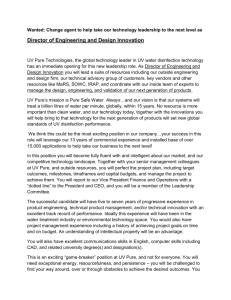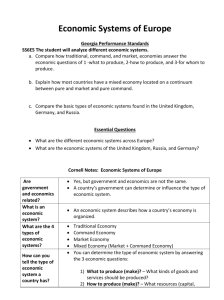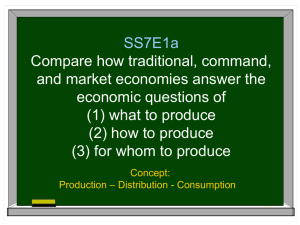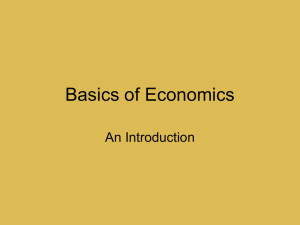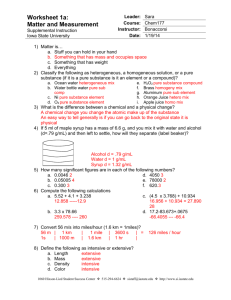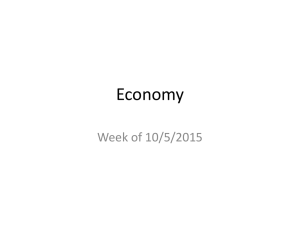Three Economic Systems q2 w3
advertisement
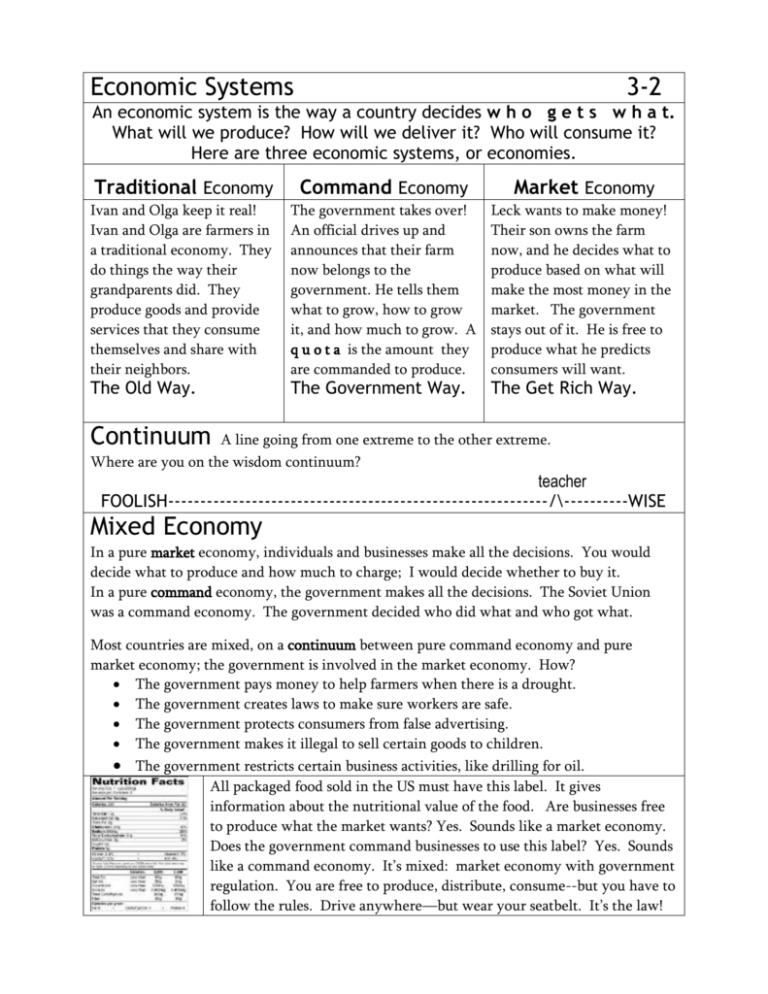
Economic Systems 3-2 An economic system is the way a country decides w h o g e t s w h a t. What will we produce? How will we deliver it? Who will consume it? Here are three economic systems, or economies. Traditional Economy Command Economy Market Economy Ivan and Olga keep it real! Ivan and Olga are farmers in a traditional economy. They do things the way their grandparents did. They produce goods and provide services that they consume themselves and share with their neighbors. The government takes over! An official drives up and announces that their farm now belongs to the government. He tells them what to grow, how to grow it, and how much to grow. A q u o t a is the amount they are commanded to produce. Leck wants to make money! Their son owns the farm now, and he decides what to produce based on what will make the most money in the market. The government stays out of it. He is free to produce what he predicts consumers will want. The Old Way. The Government Way. The Get Rich Way. Continuum A line going from one extreme to the other extreme. Where are you on the wisdom continuum? teacher FOOLISH-----------------------------------------------------------/\----------WISE Mixed Economy In a pure market economy, individuals and businesses make all the decisions. You would decide what to produce and how much to charge; I would decide whether to buy it. In a pure command economy, the government makes all the decisions. The Soviet Union was a command economy. The government decided who did what and who got what. Most countries are mixed, on a continuum between pure command economy and pure market economy; the government is involved in the market economy. How? The government pays money to help farmers when there is a drought. The government creates laws to make sure workers are safe. The government protects consumers from false advertising. The government makes it illegal to sell certain goods to children. The government restricts certain business activities, like drilling for oil. All packaged food sold in the US must have this label. It gives information about the nutritional value of the food. Are businesses free to produce what the market wants? Yes. Sounds like a market economy. Does the government command businesses to use this label? Yes. Sounds like a command economy. It’s mixed: market economy with government regulation. You are free to produce, distribute, consume--but you have to follow the rules. Drive anywhere—but wear your seatbelt. It’s the law! Economic Systems N D 3-2 C ___________ ___________ ____________ ____________ / | | \ -------------------------------------------------------------------------------------------------------------COMMAND MIXED MARKET This chart shows a mixed economy continuum. The far left is pure command; the far right is pure market. Below are the economies of four fictional countries. Place each economy on the continuum. Mezreel Hargang Galma Soloris Mezreelites are free to create whatever business they think will make money. Toxic chemicals in toys? Child labor? Dangerous factories? Full speed ahead! In Hargang, people run small businesses; the government runs big businesses. National steel! National oil! National ports! Now you build the ships. Big drives small! Every aspect of Galma’s economy is determined by the government. You! Grow 100 tons of turnips this year. You! Teach social studies. The government knows best! Solorans make free economic decisions, but the government has strict rules. New car design; wear seatbelts. Delicious cookie; nutrition label. Go ahead, but obey! 1. Which country has a mixed economy that is still heavily command. Describe that economy. 2. Which country has a free market economy? Describe that economy. 3. Which country has a command economy? Describe that economy. 4. Which country has a mixed economy that is strongly market-driven? Describe that one. 5. The Soviet Union was similar to one of these countries. Which one? In what ways? 6. Which country do inventors and business leaders love? Why? 7. Which country is most similar to France, Germany, UK? Why?
